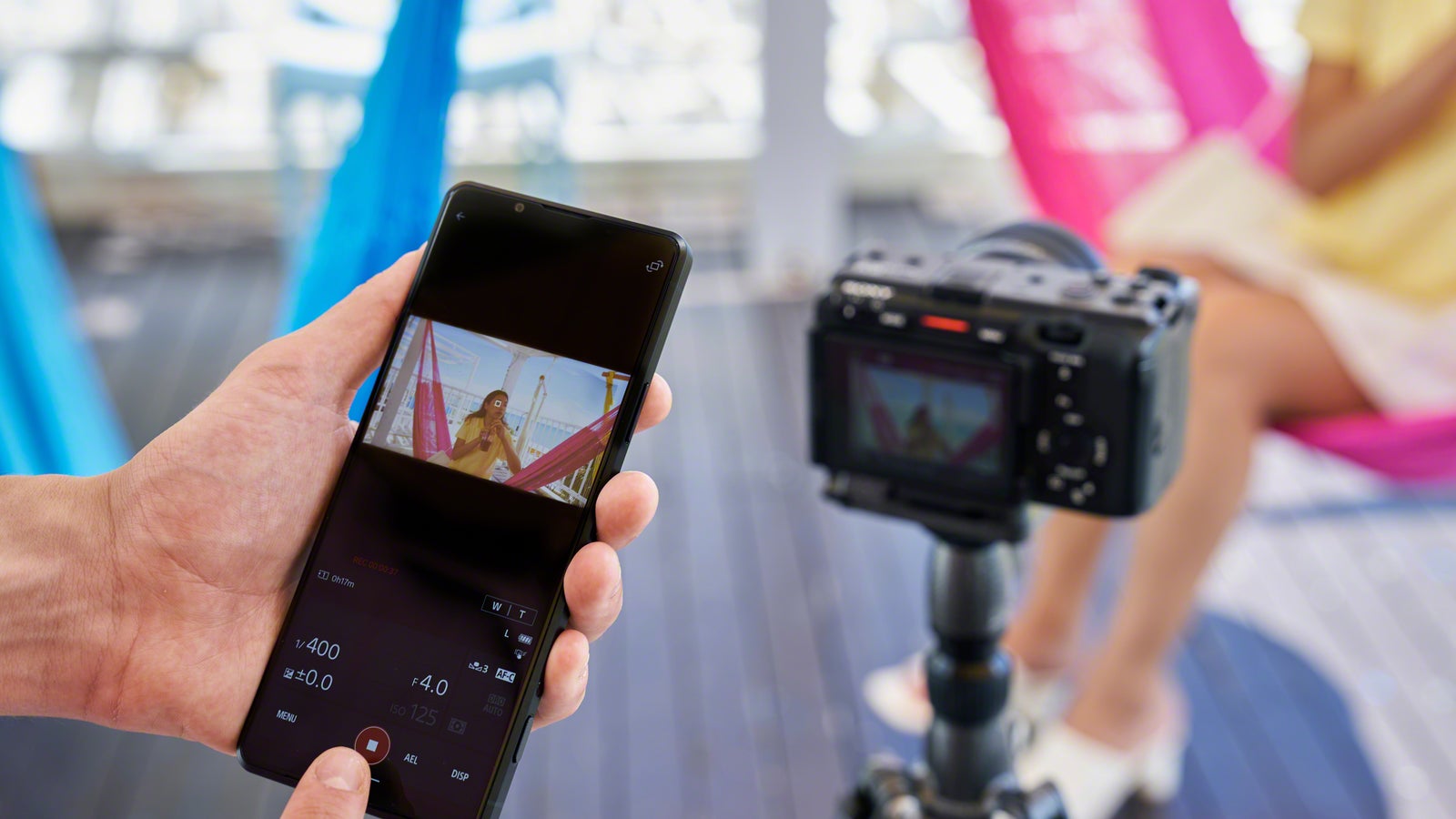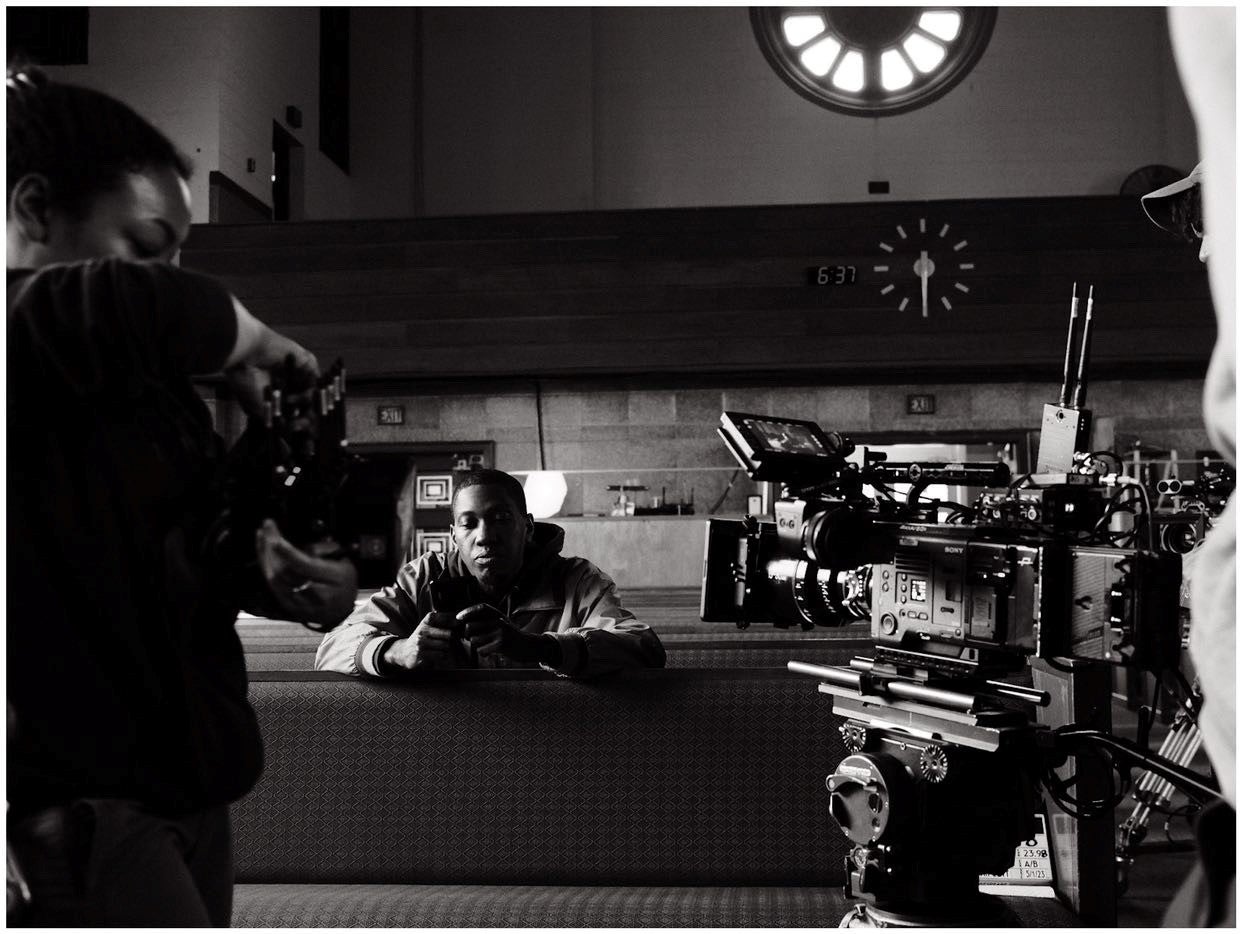
02-07-2024 - Case Study
Shot on VENICE: DPs of “As We Speak” Profile Kemba and Rap Music in the Justice System Through a Unique Visual Collaboration
By: Oakley Anderson-Moore
Just because a film is unscripted, doesn’t mean it can’t be meticulously planned.
That’s the philosophy that Logan Triplett and Allison Anderson brought when creating the look of the unique documentary film As We Speak: Rap Music on Trial.
“It wasn't a run-and-gun documentary, it was a pretty crafted feeling,” explains Anderson to Sony Cine.
“To be honest, there was very little of this film that was unplanned,” adds Triplett. “There are plenty of things that were unscripted, per se, but we tried to control the world around it.”
The film, which premiered at the 2024 Sundance Film Festival, is centered around Bronx rap artist Kemba, and explores the weaponization of rap lyrics in the criminal justice system as evidence in criminal cases.
Why Logan Triplett and Allison Anderson adopted a non-traditional process for As We Speak
Two DPs. No run-n-gun. References that include Jarmusch’s Coffee and Cigarettes and Limits of Control. Style is paramount. That was the way this documentary was presented to Triplett and Anderson– and the result is absolutely stunning to look at.
“The idea was to have a throughline visually throughout the whole thing,” explains Triplett about the reason the director approached Triplett about shooting it along with wife and fellow DP Allison Anderson. “Initially, I thought, that's very interesting, but how does having two DPs work? That's not really a traditional model. We were actually pretty reluctant. We had some long conversations about it, Allison and I.”
Initially, having two DPs on a sporadic shooting schedule meant there would always be one person available.
“But as we went along, we found out the best way for that model to work,” describes Anderson.
“When it worked, it worked very well, and we ended up filming a lot of it together,” says Triplett. “By the time we had those bigger scenes that were multi-cam, including these conversations between Kemba and different rappers, we would collaborate on those situations. We'd have headsets, and be like, ‘What do you think of this camera position versus that?’ By maybe our second or third shoot we were like, ‘Oh, this is actually really working.’”
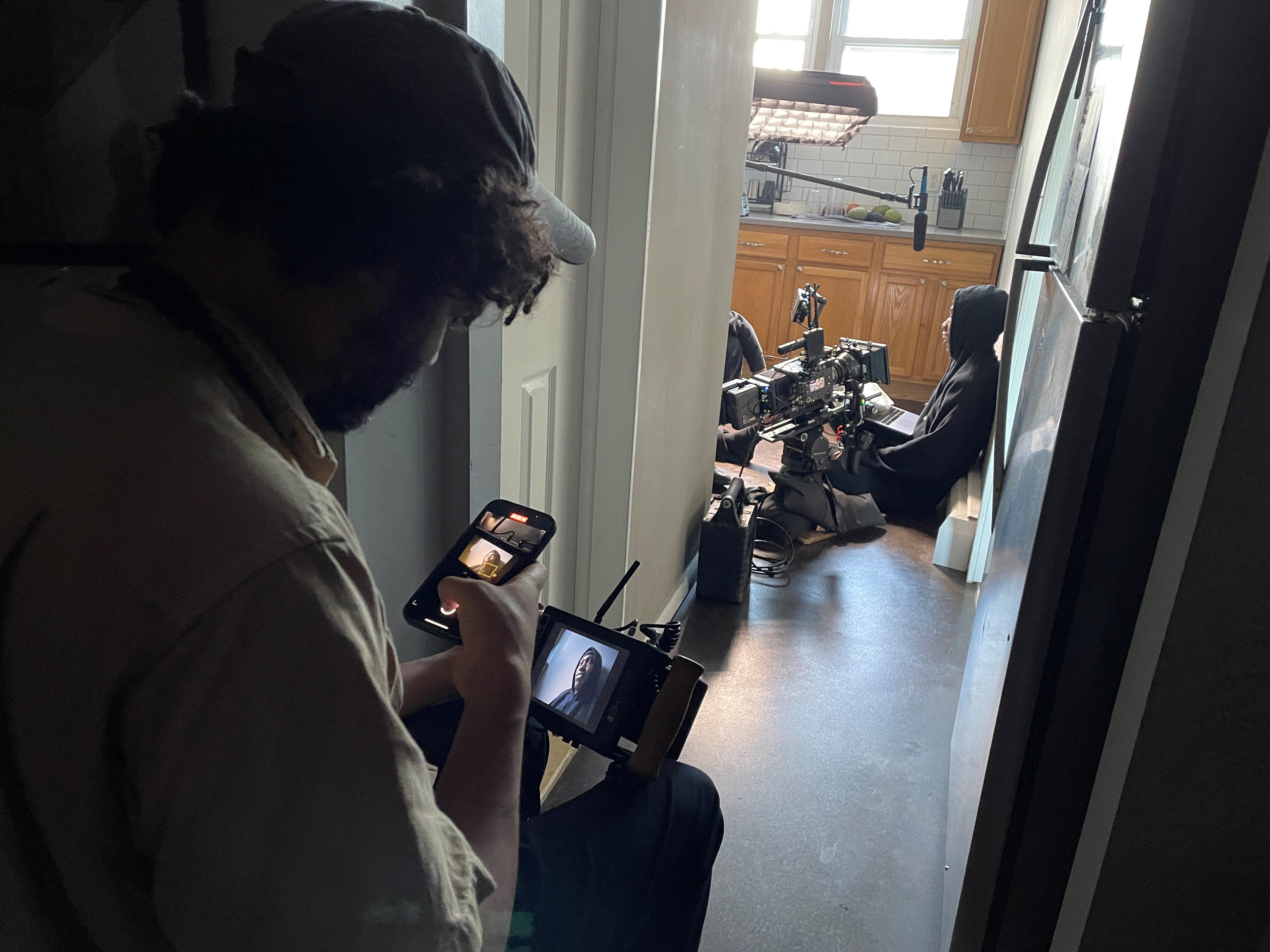
How the film team went from film to the Sony VENICE to shoot As We Speak
Director J.M. Harper has always shot on film, but for his debut feature, he knew he’d need to go digital. Triplett and Anderson called in their good friend Michael Koerner of Koerner Camera in Portland, who kindly let them come in and test every possible combination.
“We kind of did the Pepsi challenge with every camera that was available,” jokes Triplett. “We lined them up, talked about what we liked, what we didn’t, down to the ergonomics of a camera.”
Triplett and Anderson knew that the dual ISO, the internal NDs, and the Rialto mode of the VENICE made it the winner for this film.
“Ultimately, we needed a camera that allowed us the flexibility of telling the story without letting the technology get in the way,” explains Triplett. “On a project like this, you don't want to be thinking, ‘Can I make that happen for a director?’ You don't want to say no. It just allowed us to say, ‘Yes, we can make that happen.’ The VENICE allowed us to react quickly for our director."
Anderson herself had not used the Sony VENICE much prior to this project.
“Since this, I think I've used the VENICE on the majority of my projects,” says Anderson. “There's some workflow things on it that are just so nice to have. It fits my personal aesthetics. Also, the Rialto, I mean, nothing is so sweet. Especially when you're pregnant, and don't have abs to operate that thing. You can just throw it around. It's great!”

Why the dual ISO on the Sony VENICE is a game changer for unscripted
On this production, there were many times the light in the location could not be fully controlled.
“We had a few times where we had to use the dual ISO when we were in a conversation,” describes Triplett. “You think somebody's going to show up on time, and they don't. Or the conversation goes on for longer than expected.”
“The ISO was a total game changer!” says Anderson.
This was the case on one of the DPs favorite moments, a conversation with Killer Mike.
“We had a whole bay of windows at this diner,” describes Anderson. “And we're running into this time, and we're on the headsets just like, ‘Keep opening up. Keep opening up.’ Eventually, at one point, we took a break to reload, and we're like, ‘Just bump the ISO.’ And it just gave us an extra 30, 45 minutes...It ended up being my favorite moment of the film. It just has this amazing feeling to it.”
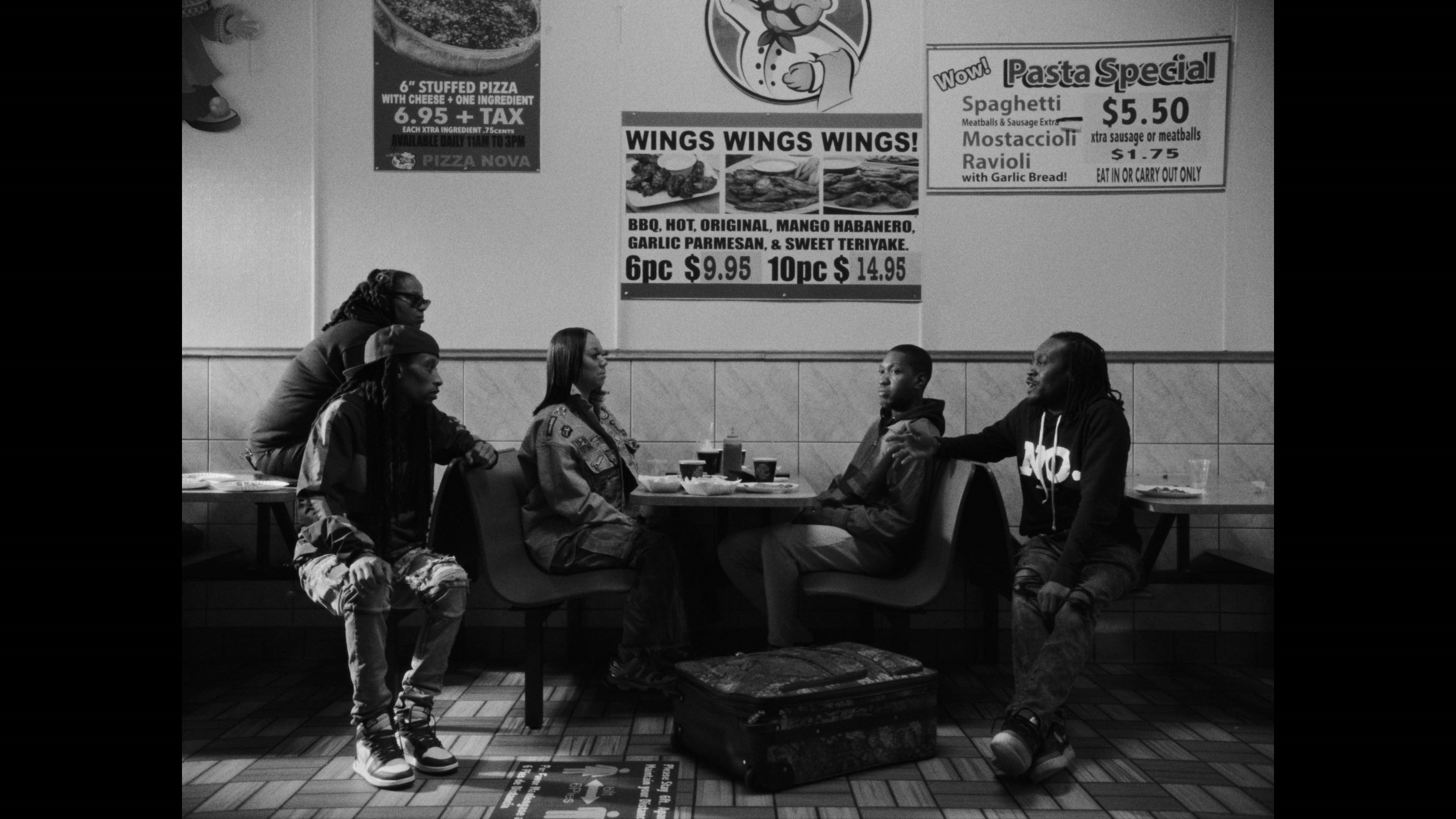
Using lenses with the VENICE internal ND to establish an intentional Kemba aesthetic
Anderson and Triplett tested lots of lenses, and ended up choosing Panavision Ultra Speeds.
“I love the way they look,” describes Triplett. “It was the perfect balance. You can achieve several different looks on the lens, depending on the stop that you're at. Teaming up with Panavision allowed us to lean into some of these expressions that we discovered as we went along. And some of that was the influence of this great library of hip-hop music videos.”
While it wasn’t a dominant theme, the reference of hip hop aesthetic was a layered reference in the film.
“When you're filming these larger than life characters, some of that comes on board by proxy,” explains Triplett. “We had a whole different set of lenses that were part of it. One particularly weird lens was this 9.8 Ultra Speed. It would bend the optics that allowed us to play with what was in Kemba's head. We tried to be really careful to always ask, what’s the look of the lens? And what does it mean for Kemba's character?”
For Triplett and Anderson, having the internal ND on the Sony VENICE became a huge key to success for being able to switch between lenses.
“I think that the NDs on the fly was a game changer,” says Triplett. “It allowed us to use some of these wider lenses where we couldn't use a Mattebox. We weren’t sitting there taping on filters. Potentially, on a narrative, you have time for that. We didn't always have that time on this. The VENICE allowed us to react quickly.”
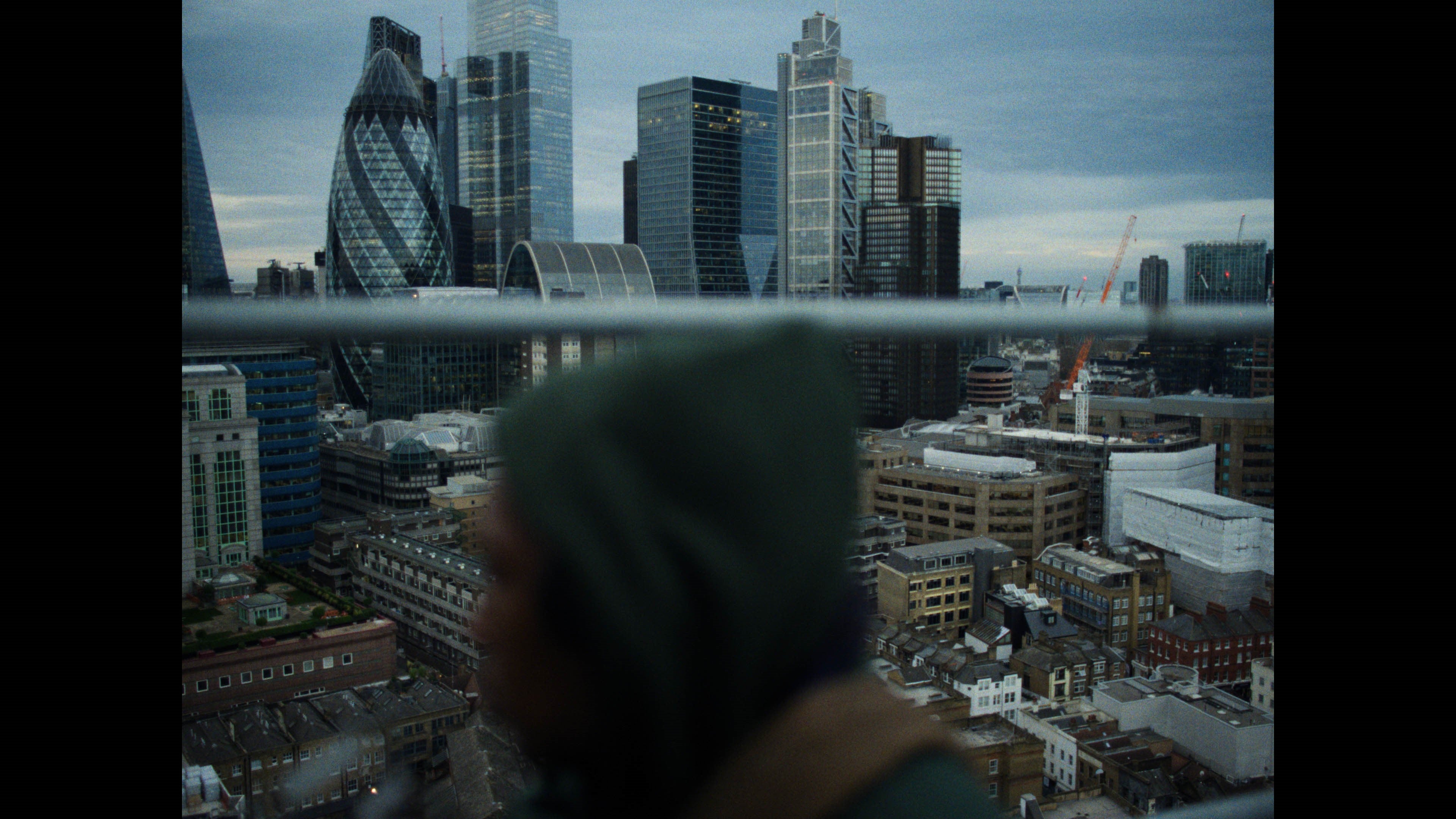
Why all films capture truth in a cinematic way
For Triplett and Anderson, this means that visually, you shouldn’t treat a documentary differently than a narrative.
“Some of my favorite moments of this film are when the film takes over and where you don't even realize whether you're watching fiction or nonfiction,” says Triplett. “I'm just interested in, what is that balance between what is real, and what isn't?”
As We Speak will be streaming on Paramount+ beginning February 27.



